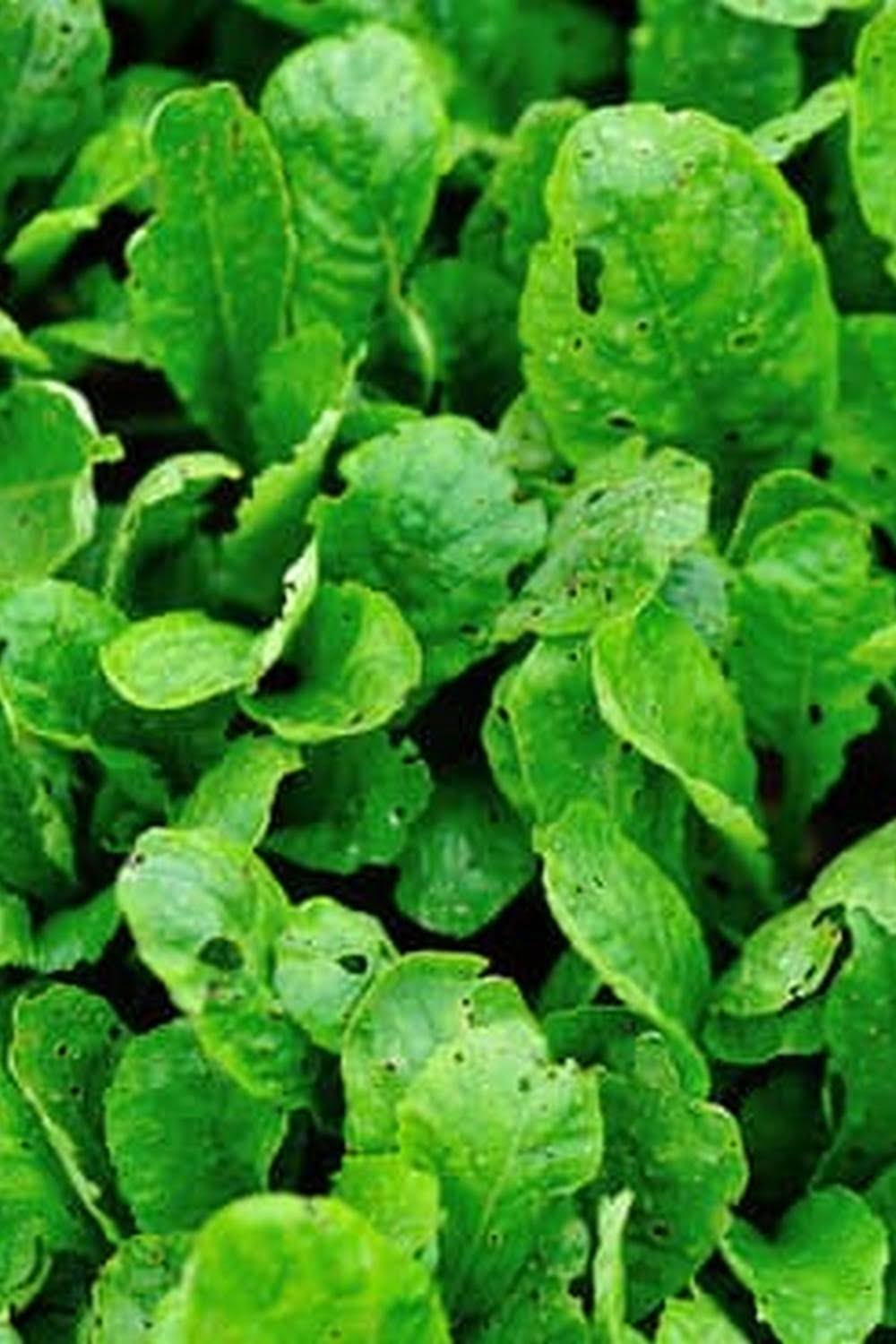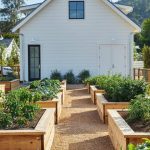Are you interested in starting a raised vegetable garden but not sure where to begin? In this article, we will explore the various aspects of planning, constructing, and maintaining a successful raised vegetable garden.
Whether you are a novice or experienced gardener, our comprehensive guide will provide you with the knowledge and inspiration to create your own thriving garden. From selecting the right location to harvesting your vegetables, we will cover everything you need to know to get started with raised vegetable gardens plans.
Raised vegetable gardens are becoming increasingly popular among home gardeners due to their numerous benefits. By defining raised vegetable gardens and highlighting their advantages, we aim to enlighten our readers about the potential of this gardening method. The convenience of accessibility, improved soil drainage, and reduced risk of pests and weeds are just a few of the many benefits that make raised vegetable gardens an attractive option for any gardener.
Furthermore, as we delve into the specifics of location selection for your raised vegetable garden, we will explore important considerations such as sunlight requirements, proximity to water sources, and the surrounding landscape. This step is crucial in ensuring the success of your garden by providing optimal growing conditions for your plants.
Additionally, we will discuss ways in which you can incorporate these factors into your overall garden design. With our guide, you’ll be well on your way to creating a flourishing raised vegetable garden that suits your individual needs and preferences.
Selecting the Right Location for Your Raised Vegetable Garden
When planning to create a raised vegetable garden, one of the most crucial steps is selecting the right location for it. The success of your garden depends on factors such as sunlight, proximity to a water source, and the surrounding landscape.
Firstly, you need to consider the sunlight requirements for your vegetables. Most vegetables require at least 6 hours of sunlight per day, so choose a location in your yard that receives adequate sunlight. In addition, be mindful of any trees or structures that may cast shadows over your garden and adjust the placement accordingly.
Secondly, proximity to a water source is important for the maintenance of your garden. Whether you plan to use a hose or watering cans, having easy access to water will make it more convenient to keep your plants hydrated. Consider placing your raised vegetable garden near a water source to minimize effort and ensure that your plants receive enough water.
Lastly, take into account the surrounding landscape when choosing the location for your raised vegetable garden. Ensure that there are no obstructions that may impede plant growth or cause damage during storms. Additionally, consider any slope in the land and make necessary adjustments for proper drainage.
| Important Factors | Considerations |
|---|---|
| Sunlight Requirements | At least 6 hours of direct sunlight per day |
| Proximity to Water Source | Access to a nearby water source for easy watering |
| Surrounding Landscape | Avoid obstructions and consider land slope for proper drainage |
Choosing the Best Vegetables for Raised Gardens
When it comes to selecting the best vegetables for your raised vegetable garden, there are a few key factors to consider. First and foremost, you’ll want to choose vegetables that thrive in the environment provided by raised gardens. Secondly, you’ll want to select vegetables that are well-suited to your climate and growing season. Here, we’ll explore some tips for choosing the right vegetables for your raised garden, as well as some popular options to consider.
Vegetables That Thrive in Raised Gardens
Certain vegetables are particularly well-suited to thriving in the environment provided by raised gardens. These include root vegetables such as carrots, radishes, and potatoes, as well as compact plants like lettuce, spinach, and herbs. In general, most vegetables will do well in a raised garden bed as long as the soil is well-draining and rich in nutrients. However, certain crops like tomatoes, peppers, and eggplants may require additional support or staking due to their size and weight.
Tips for Selecting the Right Vegetables
When selecting vegetables for your raised garden, it’s important to consider the specific needs of each plant. Take into account factors such as sunlight requirements, spacing between plants, and the depth of the root system. Additionally, think about which vegetables you enjoy eating and will make good use of once harvested. Consider a variety of leafy greens like kale and chard along with colorful additions like bell peppers or cherry tomatoes.
Some successful combinations for a productive raised vegetable garden includes planting lettuce alongside carrots so that when one crop is harvested there is room for the other one to grow properly.
Remember that careful planning is key when choosing which vegetables to grow in your raised garden beds.
Overall if you carefully plan trying different combinations success is almost guaranteed.
By carefully selecting the best vegetables for your raised garden while considering these tips I mentioned you can look forward to enjoying a bountiful harvest all season long.
Designing Your Raised Vegetable Garden
When it comes to designing your raised vegetable garden, there are several factors to consider in order to create a functional and visually appealing space. One of the first things to think about is the layout of your garden. You can choose from traditional rectangular beds, circular or curved designs, or even tiered gardens for a unique look. Consider the space you have available and how you can make the most of it with your chosen design.
In addition to the layout, you’ll also need to gather the necessary tools and materials for constructing your raised garden bed. This may include lumber or treated wood for the frame, screws or nails for assembly, soil mix, compost, and mulch. Make sure to measure and level the ground where your garden will be located before starting construction.
Creating a visually appealing garden design involves more than just the layout and construction of the raised bed itself. Think about adding decorative elements such as border edging, trellises for climbing plants, or colorful containers for herbs and flowers. These touches can elevate the overall look of your garden while also serving practical purposes.
By taking the time to plan out the design of your raised vegetable garden, you can create a space that not only provides an abundant harvest but also adds beauty to your outdoor area. With careful consideration of these design aspects and proper implementation of raised vegetable gardens plans, you can enjoy a well-organized and lovely garden that will thrive throughout the growing season.
Building Your Raised Vegetable Garden
When it comes to building your raised vegetable garden, there are several key steps to consider for a successful and bountiful harvest. First and foremost, you will need to gather the necessary tools and materials for construction. This includes items such as lumber or pre-made garden bed kits, a shovel or gardening fork, compost or topsoil, and a level for ensuring an even surface.
The next step in building your raised vegetable garden is to determine the layout of your garden bed. There are various design options to choose from, including simple rectangular beds, L-shaped beds, or tiered beds for visual interest. The layout you select will depend on the available space and your personal aesthetic preferences.
Once you have decided on the layout, it’s important to pay attention to proper soil and drainage. Ensuring that your garden bed has well-draining soil is crucial for the health of your plants. Additionally, adding organic matter such as compost can help improve soil fertility and structure.
Finally, if your raised vegetable garden will be supporting vining plants such as tomatoes or cucumbers, you may want to consider installing support structures. This could include trellises or stakes to help these plants grow upwards and save space in your garden.
| Tools & Materials | Lumber/Pre-Made Garden Bed Kits Shovel/Gardening Fork Compost/Topsoil Level |
|---|---|
| Garden Bed Layout | Rectangular Beds L-Shaped Beds Tiered Beds |
| Soil & Drainage | Well-Draining Soil Organic Matter (Compost) |
| Support Structures | Trellises Stakes |
Planting and Caring for Your Vegetable Garden
Tips for Planting Seeds or Transplants
When it comes to planting your vegetable garden, you have the option to start from seeds or transplants. If you opt for seeds, make sure to follow the instructions on the seed packet regarding depth and spacing. For transplants, gently remove them from their containers and plant them at the appropriate depth in your raised garden bed. Be sure to water them immediately after planting to help them settle into their new home.
Proper Spacing and Depth for Each Vegetable
Different vegetables have different spacing and depth requirements when it comes to planting. It’s important to research each vegetable you plan on growing in your raised garden bed to ensure that you’re providing them with the proper space and depth they need to thrive. Crowding plants can lead to competition for nutrients and sunlight, so it’s crucial to adhere to the recommended spacing guidelines.
Watering and Fertilizing Guidelines
Once your vegetables are planted, it’s important to establish a regular watering schedule. Raised vegetable gardens tend to dry out more quickly than traditional gardens, so be mindful of keeping the soil consistently moist but not waterlogged. Additionally, consider implementing a fertilization schedule using organic or synthetic fertilizers based on the needs of your specific plants.
As you proceed with planting and caring for your vegetable garden, keep in mind that proper maintenance is key to a successful harvest later on. By following these tips for planting seeds or transplants, ensuring proper spacing and depth for each vegetable, as well as adhering to watering and fertilizing guidelines, you’ll be well on your way to enjoying bountiful produce from your raised vegetable garden.
Pest and Disease Management in Raised Vegetable Gardens
Raised vegetable gardens can be a wonderful addition to any home, providing a bountiful harvest of fresh produce. However, like any garden, raised beds are susceptible to pests and diseases that can wreak havoc on your plants if not properly managed. Here are some tips for managing pests and diseases in your raised vegetable garden.
Common pests in raised vegetable gardens include aphids, caterpillars, and snails, while common diseases may include powdery mildew, blight, and root rot. One natural method for controlling pests is to introduce beneficial insects such as ladybugs or lacewings that feed on harmful pests. Additionally, using companion planting techniques can help deter pests and attract beneficial insects to the garden.
Chemical-free methods for controlling pests and diseases include using homemade organic sprays made from simple ingredients like garlic, neem oil, or soap. These concoctions can be effective at keeping many common pests at bay without harming the environment or beneficial insects. It’s crucial to monitor your garden regularly for signs of pest infestations or disease outbreaks so that you can address them promptly.
To prevent pest and disease issues altogether in a raised vegetable garden:
- Use proper soil amendments to ensure good drainage and healthy plant growth.
- Rotate crops each season to reduce the risk of soil-borne diseases.
- Keep the garden clean and free of debris that could harbor pests or pathogens.
By implementing these pest and disease management techniques in your raised vegetable garden, you can increase the likelihood of a successful growing season and enjoy a plentiful harvest of homegrown produce.
Harvesting and Enjoying the Fruits of Your Labor
When it comes to harvesting the vegetables from your raised garden, timing is key. Knowing when to harvest your vegetables can ensure that you enjoy the best flavors and nutrients from your home-grown produce. Some vegetables, like tomatoes and bell peppers, should be harvested when they are fully ripened on the vine for optimal flavor. Others, such as leafy greens and herbs, can be harvested continuously as they grow, providing a steady supply of fresh ingredients for your meals.
Proper storage and preservation of your harvested vegetables is essential to extend their shelf life. Some vegetables, like carrots and beets, can be stored in a cool, dark place for several weeks or even months if stored properly. Other vegetables, such as tomatoes and cucumbers, are best enjoyed fresh but can also be preserved through canning or pickling for long-term enjoyment.
After all your hard work in planning, building, planting and caring for your raised vegetable garden, it’s time to reap the rewards. There’s nothing quite like enjoying a meal made with fresh produce that you grew yourself.
From vibrant salad greens to juicy tomatoes and crunchy cucumbers, the satisfaction of eating from your own garden is unparalleled. So sit back, relax, and revel in the joy of enjoying the fruits of your labor from your very own raised vegetable garden.
As you continue to enjoy the bountiful harvests from your raised vegetable garden plans was successfully implemented consider sharing your experiences with friends and family members who may be inspired to start their own gardens. By doing so not only are you encouraging others but you are also contributing positively towards sustainable living practices by promoting self-sufficiency through home gardening.
Conclusion
In conclusion, raised vegetable gardens offer numerous benefits for those looking to grow their own produce. The elevated nature of these gardens provides better drainage, warmer soil temperatures, and easier access for maintenance, making them an attractive option for both novice and experienced gardeners. By following the raised vegetable gardens plans outlined in this article, individuals can create a thriving garden that produces a bountiful harvest.
As mentioned throughout this article, selecting the right location, choosing the best vegetables, designing the layout, building the garden bed, and properly caring for the plants are all crucial steps in creating a successful raised vegetable garden. Additionally, managing pests and diseases is an important aspect of maintaining a healthy garden. With proper planning and consistent care, individuals can enjoy a diverse range of produce from their own backyard.
Whether it’s the satisfaction of growing your own organic vegetables or simply enjoying the taste of freshly picked produce, raised vegetable gardens have much to offer. Therefore, I encourage readers to explore the idea of starting their own raised garden and experience the joys of homegrown food. For further information on raised vegetable gardens plans and techniques, there are many additional resources available to provide guidance and support as you embark on this rewarding gardening journey.
Frequently Asked Questions
What Is the Best Layout for a Raised Bed Vegetable Garden?
The best layout for a raised bed vegetable garden depends on factors such as sunlight, access, and convenience. Generally, it’s best to arrange the beds in a north-south orientation to ensure even sunlight exposure for the plants.
How Deep Should a Raised Garden Bed Be for Vegetables?
The depth of a raised garden bed for vegetables should be at least 6-12 inches. This depth allows for proper root growth and drainage, which are essential for healthy vegetable plants. However, some root vegetables may require deeper beds.
What Vegetables Can Be Grown Together in a Raised Bed?
Many different vegetables can be grown together in a raised bed, as long as they have similar soil, water, and sunlight needs. For example, you can grow tomatoes with basil, carrots with lettuce, and beans with corn in the same raised bed to maximize space and resources.

If you’re looking to get into vegetable gardening, or are just looking for some tips on how to make your current garden better, then you’ve come to the right place! My name is Ethel and I have been gardening for years. In this blog, I’m going to share with you some of my best tips on how to create a successful vegetable garden.





